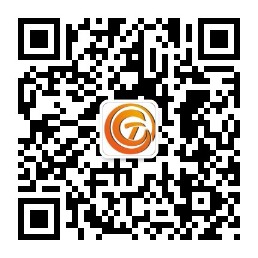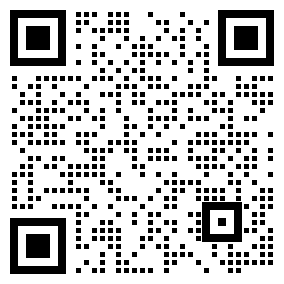Author: Adam Kimmel
The importance of efficiency is inherent. By leveraging efficiency advantages to maximize the value of additional resource expenditures, performance can be enhanced, costs can be minimized as much as possible and waste can be reduced. Energy harvesting provides a method of using environmental energy to power electrical equipment. For devices that use batteries, energy harvesting can extend the battery's lifespan or completely replace the battery's energy contribution.
Ultra-low power consumption (ULP) MCUS are a reasonable choice for energy harvesting. These devices are often used in wearable technology, wireless sensors and other edge applications that require an extension of battery life. Next, we will introduce the working principle of energy harvesting in practice, which is helpful for understanding the value of energy harvesting for ULP MCUS.
The working principle of energy harvesting
In principle, energy harvesting is a simple concept. The problem it needs to solve is the limited quantity of the main energy sources (batteries, fuels, power grids). Moreover, although there is an inexhaustible supply of environmental energy available for capture, this energy cannot be 100% converted into usable energy. This is also the reason why wind turbines have become large-scale renewable energy sources. The turbine receives potential energy from the wind, causing the blades to rotate around the rotor, which is connected to the generator to produce electrical energy. Other large-scale environmental energy sources include solar energy, ocean waves and geothermal energy, etc.
Smaller-sized technological products such as wearable devices and wireless sensors can collect kinetic energy, thermal energy or environmental electromagnetic radiation energy. Each of these energy forms uses a different mechanism to convert source power into usable energy. The utility and practicality of each energy source are important considerations, as specific applications may limit the size and quality of the equipment required for energy conversion.
Thermal radiation is very useful for wireless sensors because the design and placement of sensors can utilize two forms of energy simultaneously. On the vehicle, sensors close to the road can receive radiant heat from the asphalt road. Other sensors, on the other hand, can utilize the kinetic energy from high-vibration positions, such as near wheels or engine components. For ultra-low power MCUS, the kinetic energy recovered from the movements of human users is currently a very practical form of convertible energy.
2. Opportunities for Ultra-low Power MCUS
Since the main application of ULP MCU is wearable technology, it is crucial to process edge data with extremely low system power consumption. Energy harvesting reduces the energy demand for wearable technology batteries, which have limited energy and need to be charged or replaced regularly when their power runs out. The disposal of batteries also poses challenges because the materials used in batteries are not easy to recycle. The ULP MCU energy collector captures dynamic (mechanical) energy through piezoelectric, electromagnetic or triboelectric generators.
"Piezoelectricity"
The word "piezoelectric" comes from Greek and means to squeeze or press. Kinetic energy compresses piezoelectric materials to generate an electric field. Engineers select materials based on the expected mechanical load and electric field density, and balance their power contribution potential with material properties that deform the materials in the presence of an electric field. These competing factors enable designers to optimize the contribution of the energy collector to the repeated increase in the power of the main battery. Some estimates indicate that the dynamic motion can increase the main power supply of the ULP MCU by an average of 10mW.
Electromagnetic radiation
Another energy harvesting technology used for small MCUS is electromagnetic radiation. Radio waves, infrared rays, ultraviolet rays and microwaves carry radiant energy through the air. Environmental electromagnetic waves cause the structures in the magnetic field to vibrate, and the mechanical vibration energy is converted into electrical energy through magnets of specific sizes and air gap designs. This method can contribute approximately 0.3mW of collection power to the system.
Triboelectric nanogenerator
The final conversion medium of ULP MCU is triboelectric nanogenerator (TENG). This technology applies [different] materials to surfaces that are subject to mechanical motion (such as rotation, vibration, swinging and expansion/contraction) friction. The electrodes support these materials and recover the energy generated by the charge imbalance (static electricity) produced by the friction of the materials. The supplementary power provided by this method is one-tenth of that of piezoelectric power, approximately 1-1.5mW.
Conclusion
For wearable technology and wireless sensor networks, the daily application of ultra-low power MCUS consumes approximately tens of milliwatts of power. Lithium-ion batteries are an excellent choice for providing power for an appropriate duration. However, the sensitivity of batteries in cold weather and users' demand for extending battery life are driving current technologies to constantly push their limits. Collecting mechanical energy through piezoelectric, electromagnetic radiation and frictional power sources can provide up to 10% auxiliary life for batteries.
With the continuous optimization of resistance and current load technologies, the continuous improvement of these technologies may eventually eliminate the need for batteries in ULP MCU devices. This is a competition between the development of micro-batteries and enhancing power. Either way, consumers will be the ultimate winners.
Author Introduction:
Adam Kimmel has nearly 20 years of experience as a practicing engineer, R&D manager and engineering content writer.
He has written white papers, website copies, case studies and blog posts, covering vertical markets such as automobiles, industry/manufacturing, technology and electronics. Adam holds degrees in chemistry and mechanical engineering, and is the founder and general manager of ASK Consulting Solutions, LLC, an engineering and technical content writing company.
免责声明: 本文章转自其它平台,并不代表本站观点及立场。若有侵权或异议,请联系我们删除。谢谢! Disclaimer: This article is reproduced from other platforms and does not represent the views or positions of this website. If there is any infringement or objection, please contact us to delete it. thank you! |


